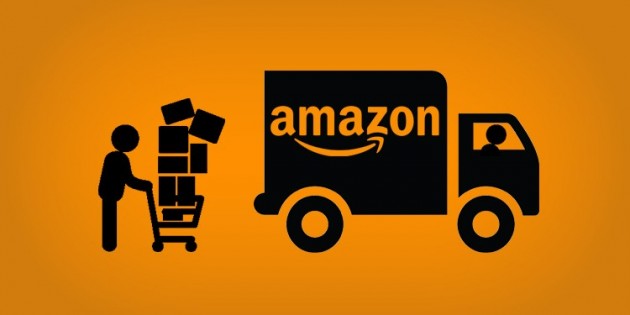Due to increased competition within business globally, the rate of organizational change has accelerated in an unprecedented way (Armenakis et al., 2000). Firms are continuously downsizing, delayering, restructuring and merging with other organisations in order to stay competitive within their industries. Although many individuals are resistant of change and see it as a negative change to the status quo and their security, some managers clench the opportunity for themselves and their organisations to grow and innovate (Mullins, 2010:753).
Importance of Change Agents
Scholars, such as Mullins (2010), stated that “there is little management can do about resistance to change” (Mullins, 2010:753). I would have to respectively disagree with this statement as the statement disregards the impact that a charismatic and credible leader can have as a change agent towards his or her employee’s resistance to change. Armenakis et al. (2000) suggest that individuals placed in all the leadership positions within an organisation are expected to collectively help support change throughout the firm. These scholars go on to mention that the most important attribute of a change agent for changing the cognitions and behaviours of employees is his or her credibility (Slater and Rouner, 1992, Kouzes and Posner, 1993; Armenakis et al., 2000). In fact, specific studies (Nystrom, 1990) have discovered that the most significant factor that determines commitment from organizational members is the rapport between a change agent or leader with his or her organizational members.
Change Frameworks
The most popular and widely utilized change management model is McKinsey’s 7-S Framework (see figure 1) developed by Waterman and Peters in the 1980s. The model provides an approach to addressing change by aligning seven key elements which are: Structure, Systems, Style, Staff, Skills, Strategy and Shared Values (McKinsey, 2008). Unlike other change management frameworks, McKinsey’s 7s model focuses on coordination rather than structure for addressing change (McKinsey, 2008).
Figure 1- McKinsey 7s Model (Source: Valuebasedmanagement.net)

The applications that this model provides are outlined in the table below.
| McKinsey 7s Applications |
| Assists in implementing new objectives and strategies |
| Helps facilitate change during mergers and acquisitions of firms |
| Supports in facilitating organizational changes |
| Identifies and analyzes the impacts and change of each element |
Criticisms of McKinsey’s Model
The first critique to be noted regarding the McKinsey 7s Model is that it assumes that a change in strategy will require a change in the skills and shared values of an organisation (Feurer and Chaharbaghi, 1995). Due to the complexity in comprehension and applications, the McKinsey framework was criticized to be more applicable and successful in managing change for large organizations rather than smaller organizations (Kaplan, 2005).
Amazon.com, Inc.
A great example of an organisation that embraces change is Amazon.com, Inc. (see figure 2). At first, they were established as a bookshop retailer exclusively and now they are considered a global retailer that sells just about anything. In fact, they even produce and offer their own motion pictures. The reason why Amazon is a great example is because they embrace the change in technology, demand and socio-cultural as an opportunity to grow in market share globally (Rajdev, 2016).
Figure 2- Amazon.com, Inc. (Source: ericmichaelbooks.com)

Apple Inc.
Forbes (2017) has ranked Apple (See figure 3) first in the world’s most valuable brands within the technology industry. The reason why they are as successful as such is because of their embrace of technological change. Apple’s cultural intelligence, which is being smart enough to develop a work culture that drives change and innovation within a firm, is the strongest in the world (Llopis, 2011). They were the first to develop and shift consumer needs from personal digital assistants (PDAs) to smartphones (iPhone), beating Samsung and all the other mobile competitors in the industry.
Figure 3- Apple Inc. (Source: Forbes.com)

Conclusion & Reflection
To conclude, it is in my opinion that leadership plays a crucial role as a change agent within an organisation. Their credibility amongst organizational members and their leadership can create a workplace culture of change by driving commitment from employees. The 7 elements mentioned in the McKinsey 7s model can help leaders understand how to coordinate during times of change.
Based on my preferences and experiences, I tend to see change as an opportunity to learn when I want to learn. However, if the change impedes my progression towards achieving my ambitions and goals within my career then I would look negatively on it. Therefore, I would respect a leader who would be able to consider my personal agenda when making decisions.
References
Armenakis, A. , Harris, S. G , Feild, H. S. (2000), Making change permanent A model for institutionalizing change interventions, in (ed.) Research in Organizational Change and Development (Research in Organizational Change and Development, Volume 12) Emerald Group Publishing Limited, pp.97 – 128.
Kouzes, J., and Posner, B. (1993). Credibility: How leaders gain and lose it, why people demand it.
Slater, M. and Rouner, D. (1992). Confidence in beliefs about social groups as an outcome of message exposure and its role in belief change persistence, Communication Research, Vol. 19, pp. 597 – 617.
Mullins L. J. (2010) ‘Management and Organizational Behaviour’. Ninth Edn. Edinburgh Gate: Pearson Education Ltd.
Nystrom, P. (1990). Vertical exchanges and organizational commitments of American business managers, Group & Organization Studies, Vol. 15, pp. 296 – 312.
Feurer, R., and Chaharbaghi, K. (1995). “Strategy development: past, present and future”, Management Decision, Vol. 33(6), pp.11 – 21.
Robert S. Kaplan, (2005) “How the balanced scorecard complements the McKinsey 7‐S model”, Strategy & Leadership, Vol. 33 Iss: 3, pp.41 – 46.
Rajdev, N. (2017). The Competitive Edge Most Companies Forget: Embrace Change. [online] Observer. Available at: http://observer.com/2016/07/the-competitive-edge-most-companies-forget-embrace-change/ [Accessed 13 Mar. 2017].
LLopis, G. (2011). The Most Successful Companies Embrace the Promise of their Culture. [online] Forbes. Available at: https://www.forbes.com/sites/glennllopis/2011/09/12/the-most-successful-companies-embrace-the-promise-of-their-culture/#140d61507fe3 [Accessed 13 Mar. 2017].
Forbes. (2017). Apple. [online] Available at: https://www.forbes.com/companies/apple/ [Accessed 13 Mar. 2017].
